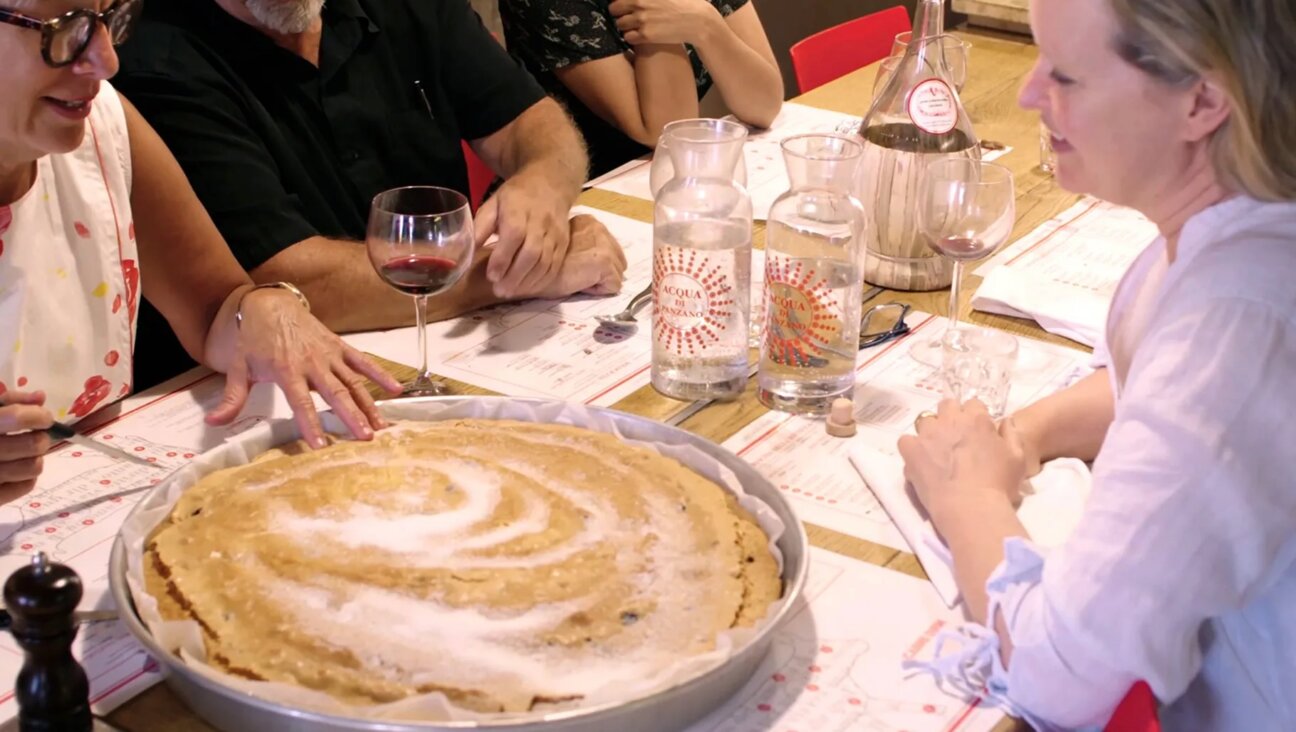Foods of Israel: Tahini

Image by FotoosVanRobin
When folks think of Israel’s reigning culinary monarch, they think of the falafel. While this might indeed be true, behind every good falafel ball is an equally delicious and every bit as loved food that is far easier, and far more nutritious: tahini. Oh the tried and true tub of tahini, lurking in an Israeli pantry near you, so often overlooked, but nevertheless, so deeply loved.
Pronounced “t’hina” (the “t” and the throaty “h” blend together that it almost sounds like “trina”), tahini is an ancient Middle Eastern paste or butter that comes to us from the sesame seed. Traditionally the seeds are hulled. Although, unhulled tahini, celebrated for its higher calcium content, is also readily available in Israel. Humble, distinct and delightfully diverse, tahini is perhaps comparable to the United States’ ubiquitous peanut butter, but without all the sugar. High in copper, manganese, magnesium, calcium, B1 and iron, and despite its high caloric numbers, tahini is most definitely a “health food.”
These days tahini is an Israeli kitchen staple, although it wasn’t always. It came to Israel via the country’s Mizrahi population — Jews from Middle Eastern countries like Lebanon, Egypt, and Iraq. And of course, there was also the influence of the country’s non-Jewish Arab citizens and neighbors — all tahini eaters. My in-laws, born in Tel Aviv in 1937 to Polish parents, remember eating tahini as kids, but only enjoyed it at home after specifically asking their parents to buy it. As adults, they moved away from the Ashkenazi food of their childhoods and towards the Mizrahi food that has now become “Israeli food” — tahini included.
Most commonly seen in Israel drizzled over falafel or sabich, generously added to hummus, or served alone as a dip for pita (although, one should note, that Israelis don’t demurely “dip” like Americans do — they wipe), tahini is also found in more surprising places like ice cream and meat dishes, and occasionally, in places where it just doesn’t quite seem to belong — like drizzled over sushi or served with nachos and guacamole. Of course, sesame is also the main ingredient in the region’s favorite candy: halva.
Tahini can be purchased “pre-made” and with additions like parsley (“green tahini”), or it can be prepared quickly from the raw stuff by adding lemon, water, cumin, garlic, or other spices. I love plain tahini, but I never say no to it doubling as a sauce, baked with ground lamb in the traditional Arab dish Siniya, as the star in an ice cream sundae, or served with halva strands and maybe a dollop of dulce de leche. Tahini also can be easily put to work at home — mix it with honey or date syrup to remedy a sweet tooth attack, combine it with roasted eggplant for babaganoush, or use at as a base with ginger and miso and dip in summer rolls or satay chicken. Although subtly bitter, tahini is a chameleon- effortlessly taking on sweet or savory flavors, and boosting them to new levels. See the magic it works in this delightfully sweet recipe for Date Tahini Balls.
Date Tahini Balls
10 medjool dates, dried and pitted
½ cup raw tahini
½ cup date syrup (ceylon)
1 tsp vanilla
1½ cup flour
1) Blend dates in a food processor or chop them very finely. If using a food processor, add a bit of water to keep it from all sticking together.
2) Mix tahini and date syrup (honey would probably also work) with vanilla in large bowl
3) Mix chopped dates into tahini mixture
4) Add flour to the tahini mixture, mixing. Keep adding until you can roll the dough into a ball
5) Option 1: Make balls and put in fridge/freezer for tahini balls. These will have a stronger flavor than below
Option 2: For a sort of light tea cookie, bake on a greased cookie sheet at 350°F for 15-20 minutes
This is a very simple recipe to build on. You can add nuts or roll balls in sprinkles to appeal more to kids. You can also blend some oats with the dates in the food processor for some extra nutrition.
Cindy Katz is an ex-New Yorker living in Ra’anana, Israel. She likes to write about what she eats and where she goes in Israel, and she also coordinates a women’s program for Darfuri refugees in south Tel Aviv.
A message from our Publisher & CEO Rachel Fishman Feddersen

I hope you appreciated this article. Before you go, I’d like to ask you to please support the Forward’s award-winning, nonprofit journalism during this critical time.
We’ve set a goal to raise $260,000 by December 31. That’s an ambitious goal, but one that will give us the resources we need to invest in the high quality news, opinion, analysis and cultural coverage that isn’t available anywhere else.
If you feel inspired to make an impact, now is the time to give something back. Join us as a member at your most generous level.
— Rachel Fishman Feddersen, Publisher and CEO























